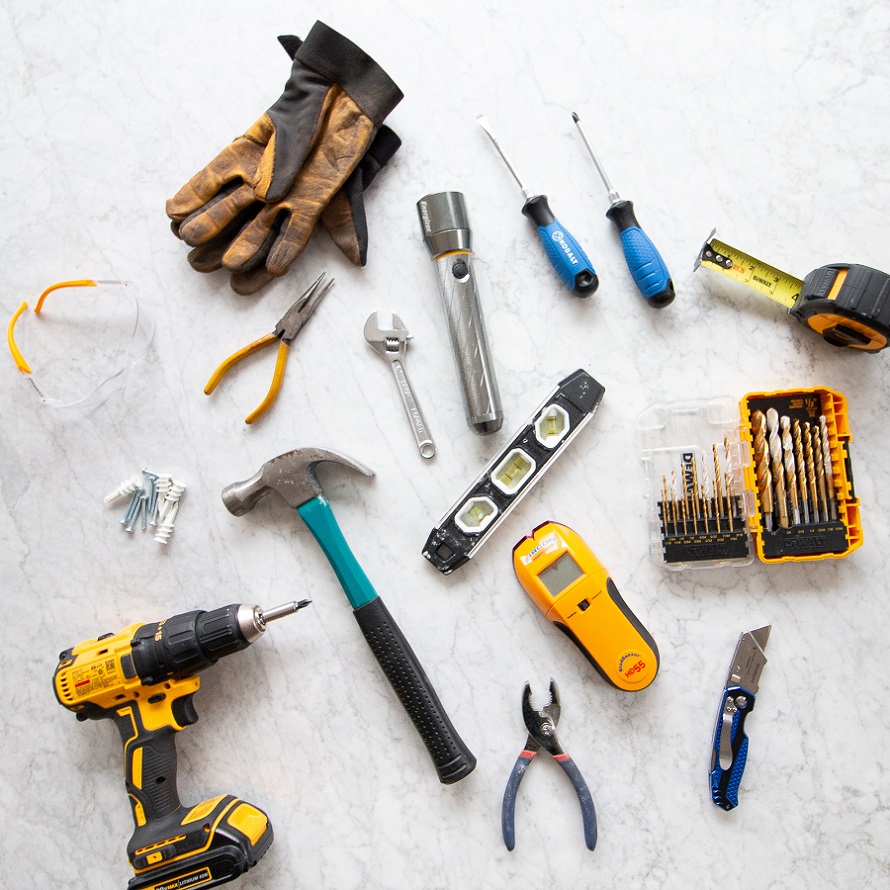Safety Basics: 8 Tips When Handling Power and Hand Tools

The use of power and hand tools on construction sites and other work areas is commonplace. Proper handling of these handheld equipment should be second nature to many individuals. This, unfortunately, is exactly why a lot of people tend to overlook the hazards they pose.
Thousands of people every year end up in emergency rooms due to mishaps involving hand and power tools. Some of these accidents occur because of equipment misuse. Others sustain severe injuries due to much simpler reasons, such as not wearing the right safety gear.
If you’re going to use these tools at work, you’ll need to take precautions and recognise potential hazards.
Here are eight suggestions to stay safe while using portable hand and power equipment:
-
Wear Personal Protective Equipment (PPE)
Invest in high-quality PPE safety gloves. Make sure they fit well and are free of tears, holes and other defects. If the hand protection gear you currently have feels awkward and doesn’t allow free movement, get rid of them and purchase new ones. Putting on the right gloves is crucial, as improper hand protection can cause injuries.
-
Put on the Proper Attire
Wearing the right PPE gloves is just the first step. You also must dress for the job when handling power and hand tools.
Here are a few guidelines you should follow:
- Refrain from wearing neckties and loose-fitting clothing.
- Take off any dangling objects, such as necklaces and loose bracelets, before you begin working.
- If you have long hair, make sure to tie it properly, so that it doesn’t get in your way.
- Put on non-slip boots, especially if you intend to use hand and power equipment in high altitudes.
-
Maintain a Firm Balance and Grip on Your Tools
Power tools, as the name suggests, are powerful. Given this, you need to stay in control of them at all times. On top of using non-slip footwear, you need to maintain a good balance and plant your feet on a solid surface, such as a sturdy wooden step stool.
Equally important to a firm balance is a solid grip on your handheld tools. Losing control of your portable equipment can create a hazardous situation for you and the surrounding people. If you believe that the hand tool you’ll use is too heavy, don’t use it.
-
Keep Your Hand Tools in Good Working Order
The safe use of handheld equipment begins with tools that work properly. Your cutting tools, for instance, should have sharp blades. Dull blades are dangerous, as they require more effort to cut or slice objects. This raises the likelihood of tool slipping.
What’s more, blades need to be free of large chips and clean. If they’re metal, they should be free of rust. When a standard ceramic or metal blade requires replacement, throw away the used or broken component in the sharps disposal bin.
The other parts of the handheld equipment, such as the handle, should have no cracks or loose components. Get these tools replaced or repaired when they don’t meet safety standards.
-
Work Under Proper Lighting Conditions
Another situation that causes injuries is improper or insufficient workplace lighting. Some individuals often overlook the importance of working in a properly lit environment. Power tools can be deadly when you use them in dimly lit conditions or areas. If the light in your work area or construction site isn’t bright enough, switch on or bring in additional lights.
-
Teach and Remind Proper Tool Safety
Hand and power tools aren’t toys. Workers should use these handheld equipment appropriately and correctly. One of the most common reasons behind workplace injury is tool misuse.
Ask your company to hold regular safety training sessions on the proper use of the power and hand tools in your workplace. Also, take the initiative to post tool safety posters and photos that depict proper use on workstations.
-
Allocate a Specific Area for Hand Tool Usage
If possible, reserve a space where workers can safely and freely use the hand and power tools. The physical act of going to a specific zone will help employees be more mindful of the job at hand. This space also serves as a reminder that they’re entering an area where individuals are using potentially harmful tools and equipment.
-
Switch Off and Unplug the Power Tools After Use
Avoid leaving your handheld equipment plugged in and on standby mode. This can cause serious problems for individuals who don’t realise that the device is still on. So, make sure to shut down the power tool, unplug it and store it in the proper casing.
Although safety isn’t complicated, power and hand tool users should take it seriously to avoid injuries. Simple precautions can spell the difference between healthy hands and a trip to the hospital.